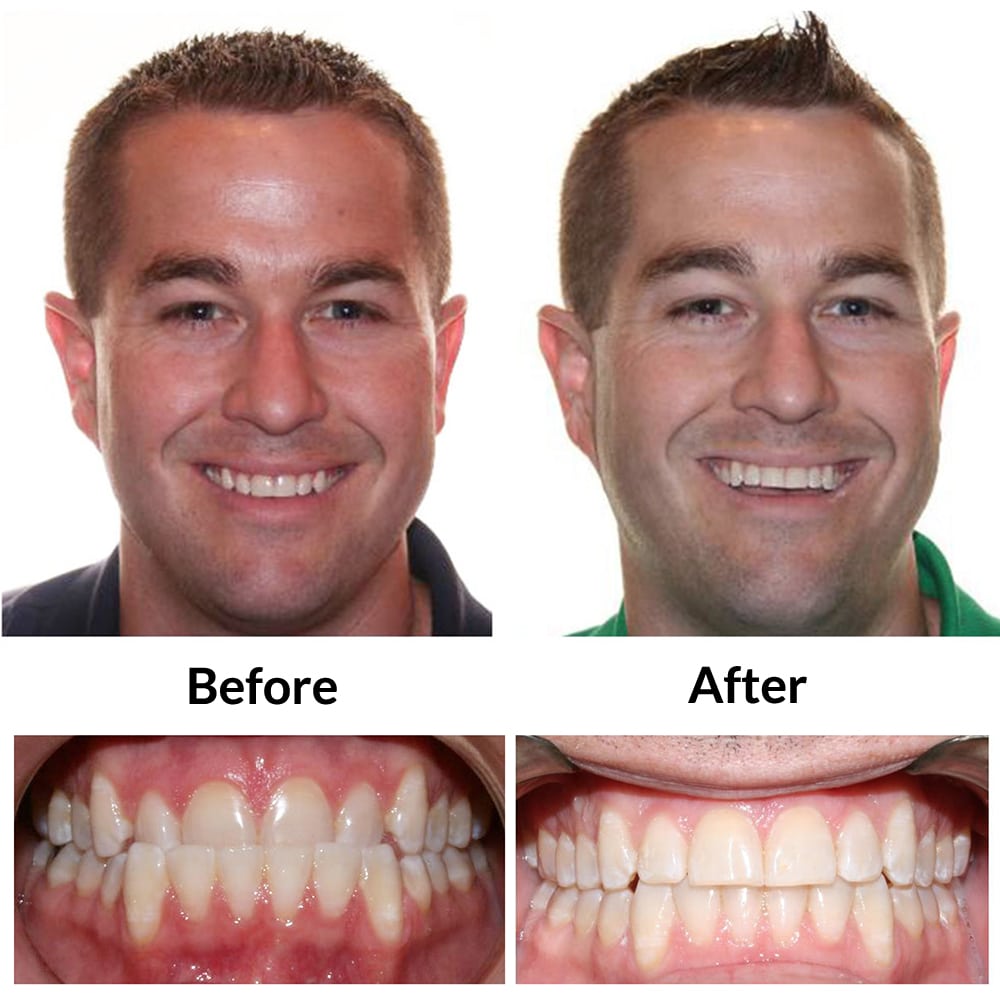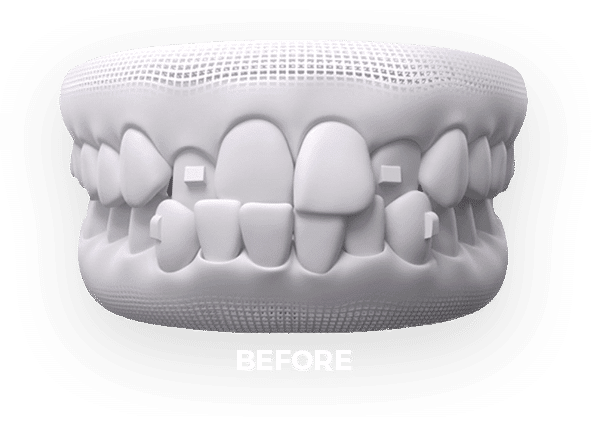Preserving Oral Health While Using Invisalign: Tips for a Smooth Experience
Preserving Oral Health While Using Invisalign: Tips for a Smooth Experience
Blog Article
Invisalign vs. Traditional Braces: Which Choice Is Right for You?
When taking into consideration orthodontic treatment, the choice between Invisalign and standard dental braces offers several essential elements that warrant mindful evaluation. Invisalign offers a discreet option with removable aligners, while standard dental braces give an extra noticeable yet reliable solution for severe misalignment. Each option encompasses unique benefits and disadvantages associated with visual appeals, comfort, treatment duration, and price. Comprehending these nuances is vital for making an informed choice that lines up with your individual choices and way of living. The question remains: which alternative will ideal satisfy your orthodontic requirements and expectations?
Summary of Therapy Alternatives

In contrast, standard dental braces include steel brackets and cables that are bonded to the teeth. This technique uses continuous pressure gradually to achieve positioning. While reliable for intricate orthodontic issues, standard dental braces require routine brows through for adjustments and can present obstacles in maintaining oral hygiene because of the difficulty of cleaning up about wires and brackets.
Both choices have their values, and the selection frequently hinges on certain oral problems, way of living choices, and patient compliance. Ultimately, speaking with an orthodontic expert is vital for establishing one of the most ideal therapy strategy customized to specific demands. Recognizing the subtleties of each alternative can significantly affect the overall success of orthodontic treatment.
Visual Factors To Consider
A substantial variable affecting the selection in between Invisalign and standard dental braces is the aesthetic appeal each treatment offers. Invisalign aligners are crafted from clear plastic, making them virtually unseen when put on. This very discreet appearance is particularly appealing to teens and adults who might really feel uneasy regarding their orthodontic treatment. The capacity to keep a natural smile throughout the alignment procedure can dramatically improve the client's confidence in social and specialist settings.
In contrast, typical braces include steel brackets and cables, which can be much more noticeable. While innovations in orthodontic innovation have brought about the growth of smaller sized brackets and colored elastics, typical braces still keep a more obvious profile. For some people, the visibility of dental braces might discourage them from seeking needed treatment.
Eventually, the selection between Invisalign and typical dental braces might depend upon individual choices concerning aesthetic appeals. Patients who focus on discernment frequently favor Invisalign, while those that are less concerned concerning visibility may go with typical braces. Comprehending the visual implications of each option is vital for making an informed decision that lines up with one's way of life and choices.
Comfort and Convenience

In terms of convenience, Invisalign aligners are detachable, making it possible for people to appreciate their preferred foods without restriction and maintain optimum dental health. Cleaning and flossing are simplified, as the aligners can be taken out throughout these regimens, whereas conventional braces call for cautious maneuvering around braces and cables.
Furthermore, Invisalign's progressive system enables less orthodontic check outs. Individuals normally receive numerous sets of aligners at the same time, which can enhance the treatment procedure and decrease time invested in the orthodontist's chair. In contrast, typical braces demand routine changes, making them less hassle-free for those with hectic timetables. Invisalign. Generally, the convenience and comfort of Invisalign make it an appealing option for many individuals looking for orthodontic therapy.
Treatment Period and Performance
While both Invisalign and conventional dental braces are effective in fixing oral imbalances, the period of treatment can vary substantially in between the two options. Normally, Invisalign therapy can take anywhere from 12 to 18 months, depending on the complexity of the situation. The clear aligners function by progressively changing teeth into their desired settings, and routine follow-ups with an orthodontist assistance make certain progression remains on track.
On the other hand, standard dental braces commonly call for a longer dedication, generally ranging from 18 months to three years. This is due to their fixed nature and making use of brackets and wires, which can be more effective for severe misalignments and complex cases (Invisalign). The therapy performance of typical dental braces is well-documented, as they permit for specific changes and higher control over tooth motion
Eventually, the choice between Invisalign and traditional dental braces might rest on both the expected treatment duration check these guys out and the particular dental issues available. Consulting with an orthodontist is vital, as they can supply customized suggestions based on individual needs, making sure the selected technique lines up with desired timeframes and end results.
Price Contrast and Insurance Policy Choices
Expense plays a substantial function in the decision-making process for people taking into consideration orthodontic treatment, whether choosing for Invisalign or traditional braces. Usually, the expense of Invisalign ranges from $3,000 to $8,000, while typical dental braces usually cost in between $2,000 and $6,000. Elements affecting these expenses consist of the complexity of the case, the duration of treatment, and geographical location.
Insurance policy coverage can significantly affect out-of-pocket expenses. Lots of dental insurance policy plans supply partial this post coverage for orthodontic therapies, but the specifics can differ extensively. It is vital for patients to examine their insurance plans to determine the degree of insurance coverage for either choice. Usually, conventional dental braces might be much more regularly covered by insurance plans contrasted to Invisalign, which some insurance companies classify as a cosmetic procedure.
Additionally, a number of orthodontic methods supply adaptable payment plans, making both treatment choices a lot more accessible. Clients ought to ask about possible funding options and discounts for upfront payments. Assessing the overall expense, including insurance coverage benefits and blog repayment strategies, is necessary for making a notified decision that lines up with both aesthetic preferences and budget considerations.

Conclusion
In summary, the choice in between Invisalign and conventional dental braces pivots on several aspects, including aesthetic preferences, convenience, therapy duration, and cost. Invisalign offers a discreet, detachable alternative that assists in oral hygiene and nutritional adaptability, while typical dental braces might be better for intricate oral problems and typically come at a reduced cost point. Ultimately, appointment with an orthodontist is necessary to examine private circumstances and establish one of the most suitable treatment option for attaining ideal oral positioning.
When thinking about orthodontic treatment, the option between Invisalign and typical braces presents a number of essential variables that merit careful examination.Comparing Invisalign and typical braces discloses unique treatment choices for orthodontic correction.While both Invisalign and standard braces are efficient in correcting oral misalignments, the period of therapy can vary significantly between the 2 options.Price plays a significant function in the decision-making process for individuals taking into consideration orthodontic treatment, whether deciding for Invisalign or traditional braces.In recap, the choice between Invisalign and typical braces hinges on numerous factors, consisting of visual preferences, comfort, therapy duration, and expense.
Report this page